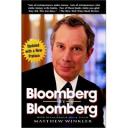Continuing with my review of Artful Making, here are some things to consider when deciding whether an more industrial approach, or an artful one will better suit your needs.
I have attempted to make Rob Austin’s points (summarized) in block, with my own in clear text underneath.
Artful making (see previous post for defn) features rapid frequent iteration. This approach only makes sense when the cost of an iteration, is cheap compared to the benefits gained from the experience. If the cost of an iteration is high (as in integrated chip, or car manufacturing), you would be better off doing more upfront planning.
Here are two factors to consider in the cost of an iteration:
1. Reconfiguration Costs
Reconfiguration is doing something once, and then tweaking it ever so slightly to do something else. When you can do this cheaply you have a low reconfiguration cost. Car manufacturing doesn’t have a low reconfiguration cost. Reconfiguration of a car design would involve retooling, new equipment, and possibly changing the layout of a plant. Reconfiguration in software development can be relatively inexpensive. Theatre production arranges and rearranges the actions and interactions of the performers, also inexpensively. Hence, software development as well as other business activities can be, in this regard, more like rehearsal than like car making.
Rob is bang on with this point. It shouldn’t be any surprise that early on our industry gravitated towards industrial, or heavily planned waterfall like methods. When you program a computer with punch cards, and a run of the software takes an evening, you are naturally going to spend more time upfront getting things right.
Things are much different today. Just-in-time compilers, databases, Object Oriented design, continuous integration tools, automated regression tests have made the cost of reconfiguring software much cheaper than 40 years ago.
Agile software engineering practices (typified by XP) have low configuration costs.
2. Exploration costs
The second component of the cost of iteration is the cost of trying something that doesn’t work well enough to continue doing it. In an industrial setting, we might think of exploration costs as “scrap costs.” It’s expensive to throw away physical prototypes. When the cost of exploration is high, you want to avoid making too many throw aways. Similarly, a doctor must consider that iteration may have unacceptable impacts on patients. Software development, by contrast, routinely generates “bad” versions as a way to explore possibilities. These versions are not released and can be fixed as early as the next day. Here, too, software development is more like rehearsal than manufacturing; in theatre, there is not much lost when actors try something that doesn’t “work” because something different can be tried in the next rehearsal.
Rob quite rightly points out that agile (and software development in general) doesn’t suffer from the “scrap costs” described in car manufacturing. The scrap costs in software development are people’s time (which shouldn’t be ignored). Still the cost of exploring new designs, architectures, and patterns in software is relatively cheap, compared to the payoff that comes with a cleaner, more maintainable system that is less expensive to support.





